Archive for ‘Vital Documents’ Category
Paper Doll on the New Medicare Cards: How To Organize Against Identity Theft & Scams
Are you one of the almost 60 million Americans enrolled in Medicare? Are your parents or grandparents? If so, it’s important to know that all Medicare recipients will soon be getting new identification cards. The first of the new cards will be mailed starting April 1, 2018, and the rollout will continue through April 30, 2019.
Why the Change?
According to the Centers for Medicare and Medicaid Services (CMS), the new cards will better protect an enrollee’s identity and guard against fraud. Basically, the hope is that the new Medicare ID cards will make it much harder for the bad guys to scam Medicare recipients and steal their identities.
The new Medicare cards will have less personally identifying information than in the past. Cards won’t have the bearer’s Social Security number, gender, or signature.
Each new card will have a computer-generated Medicare Beneficiary Identifier (MBI) assigned specifically to each Medicare enrollee. The MBI will be a combination of eleven numbers and letters, and healthcare providers (including physicians, labs, and hospitals) will be required to bill using MBI instead of Social Security numbers.
Medicare has created a special website, go.medicare.gov/NewCard just to help people feel more at ease with the changes. (CMS has special links available to help healthcare providers and office managers, health insurance and drug plans, employers and media, and individual states cope with the change.)
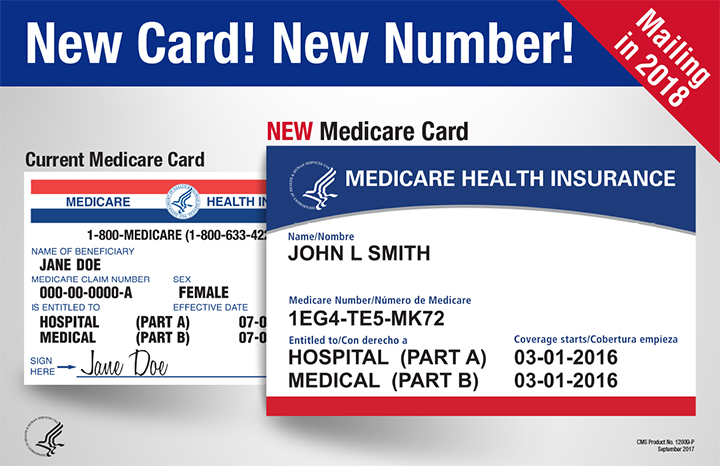
But what do you have to do?
Step one is to be aware that the change is coming. If you’re a Medicare recipient, or your parents, grandparents, or older friends have Medicare, start by letting them know the cards are on their way.
Doctor’s offices will be asked to play the following video for the benefit of their Medicare patients, and I encourage you to share this video via social media so that other enrollees and their loved ones can be apprised of what’s going on.:
Cards will come automatically. Benefits stay the same. There’s nothing else you absolutely have to do. However, if you’ve moved recently or are just starting to receive benefits, the Social Security Administration urges Medicare enrollees to make sure the agency has their correct address on file.
Log into your Social Security account at socialsecurity.gov/myaccount (What? you didn’t follow Paper Doll’s advice for setting up your online Social Security account? Not even when I pestered you about it?) or call 800-722-1213 to update your address in the system.
[One special note: Every Medicare enrollee is getting a new Medicare card, but if you are also enrolled in a Medicare Advantage Plan (like an HMO or PPO), your Medicare Advantage Plan ID card is your main card for Medicare. So hold onto your Medicare Advantage Plan ID card, and keep it for whenever you need healthcare care. However, healthcare providers may ask you to show your new Medicare card, so keep it ready, too.]
So what’s the catch?
The Department of Justice reports that identity theft for seniors aged 65 and above is a serious problem. In fact, in 2014, the most recent year for which statistics have been released, 2.6 million seniors are victims of identity theft annually! (The Federal Trade Commission has released a document explaining the seven most common identity theft schemes targeting seniors.)
There’s little doubt that scammers and identity thieves are already anticipating this Medicare card change, using potential confusion to their scummy, scammy advantage. However, sharing some basic information can help protect those most in danger of being victimized.
Spread the word (to Dad, Grandma, Aunt Gertrude, and your older pals) that if any of the following things happen, it’s a scam.
If you’re called on the telephone and asked to pay to receive your new Medicare card, hang up. The card is free to all Medicare recipients.
If you’re called and asked for your Social Security number and bank number in order to get your new card, hang up. Medicare won’t call you. Medicare doesn’t need to know your banking information. Ever.
If you’re called and told you will lose your Medicare benefits if you don’t send money or provide your banking info or credit card now, roll your eyes and hang up.
If there are any “fragile” seniors in your life who may be at risk for being coerced, assure them that if they ever get such a call, they should hang up without fear. If they are still ill at ease, tell them to ask for the caller’s name and number and say that their “financial representative who handles all of these tasks” for them will return the call. Then, you can call and report these ne’er-do-wells to the police.
What’s the Timeline?
Medicare beneficiaries in Delaware, Maryland, Pennsylvania, Virginia, West Virginia, and the District of Columbia will be the first to receive the replacement cards (between April and June). Medicare enrollees in Alaska, American Samoa, California, Guam, Hawaii, the Northern Mariana Islands, and Oregon will also start getting their cards in the April to June 2018 range. If you’re in any other state, the mailing date is merely defined as “after June 2018” and the rollout will continue over the course of the next twelve months. Almost 60 million recipients getting new cards means a lot of mail to process!
Medicare recipients will have until 1/1/2020 before they are required to use the new card, and while both cards will be valid until that date, getting the new card in action and shredding the old card will ensure protection. I also encourage you to make a photocopy of your new Medicare card (just as I always advise photocopying the contents of your wallet) and keep it in a safe place, like your fireproof safe with your other VIPs (very important papers).
For more on the important documents that should (and shouldn’t) be in your wallet, refer to these classic Paper Doll posts:
What’s in Your Wallet (That Shouldn’t Be)?
What’s in Your Wallet (That Should Be)?
What’s in Your Wallet (Part 3): A Little Insurance Policy
Lost and Found: GONE in 60 Seconds: Your Wallet
Stay healthy. Stay aware. Stay organized!
NAPO2014: Just in Case? LifeinCase™
Chances are good that you’ve had reason to worry — at some point in your life — about evacuating your home or town in an emergency. Maybe it’s been a random conversation with your kindergartener about why you have fire drills at school but not at home, or you’ve read the federal government’s Ready.gov pages on emergency preparedness and wondered how you measure up. Or maybe you’ve had actual experience with floods or hurricanes, and don’t ever want to be caught unprepared for getting all your documents together.
Longtime readers know that Paper Doll advises having all of your VIPs (Very Important Papers) tucked safely away, as we’ve discussed in:
- Top 10 Vital Documents — Do You Know Where Your VIPs Are?
- More VIPs — Very Important Papers Beyond the Top 10
- Safeguard Your Very Important Papers: Safe Deposit Box Basics
- The Ultimate Treasure Map: Creating a Document Inventory
The truth is, whether you keep your most important documents in your safe deposit box, in a fire-proof safe, in your filing cabinet or even your deep freezer, you still need to deal with the following issues:
- Do you actually possess all of the documents you might need?
- Are all your documents accessible?
- Are they portable — and quickly — in case of emergency?
To ensure that you have all the documents you need, you can (and should) refer to posts and articles like those to which I’ve linked above. But knowing you ought to do something doesn’t always mean it gets accomplished.
With regard to accessibility, keeping documents (originals, or more likely certified copies) at home means that you don’t have to worry about the bridge between you and your bank’s safe deposit box being washed out when you need to show vital documents to your insurance agent. But even if your papers are at home, are they always protected (from theft and from the elements)? And what do you do when you travel, or especially if you travel frequently?
As much as I love clients being able to have a tidy VIP section in the legal area of their Family Files, in a dire emergency, you may not have the time or focus to search and find everything before you go. That’s why I was intrigued to see a new product at this year’s NAPO Expo that focuses, not just on another kind of filing system, but on easily maintaining and safekeeping vital documents.
LIFE IN CASE™ — THE BASICS
LifeinCase™ didn’t merely exhibit at the NAPO Expo. It won the prestigious 2014 NAPO Organizers’ Choice Award for Best Solution for Organizing Information at Home. Let’s see why.
Each LifeinCase™ features:
- A portable case: The poly, briefcase-style tote is lightweight but durable and water-resistant. It’s not going to act as a flotation device in case of a water landing, but it’s going to keep your documents relatively dry and safe if you’re escaping amid the harsher elements. The lid clasps shut with Velcro, so unlike three-ring binders which might fly open in brisk wind, documents are safe.
- A 5-folder system: LifeinCase™ has a poly folder for each of what the creators consider the five main categories of documents you’re likely to need in an emergency: Personal, Financial, Medical, Estate, and Property.
- Handy checklists: On the exterior of each folder, there’s a printed checklist of 10 essential documents to keep within that folder.
- 500 Sheet Capacity: The sturdy tote holds up to 500 pages, plus the folders. This is built to be a self-limiting system, so you keep storage to a minimum (of just the vital documents) and keep clutter at bay. This isn’t for all of your papers — just the papers you’d need in an emergency.
- Grab & Go: The LifeinCase™ tote can travel with you or be stored in a personal safe. Relocating? Let the movers take your locked filing cabinet, but keep your vital documents private and safely with you.
Also, for those who need or want to maintain access to certain cloud-based documents, LifeinCase™ has partnered with MobilLogic (about which, we’ve written previously), so individuals and companies can match up the paper files outlined in the LifeinCase™ checklists with personal or business systems, including electronic data.
THE FIVE CATEGORIES
For a little more detail on the categories and each folder’s checklists:
The personal category focuses on the essential VIPs specific to you, personally. These would be your birth certificate, copies of your passport and Social Security card, citizenship papers, military documents, etc.
The financial category limits itself to just the essentials you might need if you were displaced and needed to temporarily rebuild your world — such as after a community evacuation. These might include a copy of your most recent income tax return, a list of your credit cards (or, as Paper Doll recommends, a photocopy of the front and rear of all of the contents of your wallet), copies of stock and bond certificates (or at least their numbers and pertinent information), loan and credit contracts, etc.
The property category includes, as you might expect, property titles (for real estate, vehicles, boats, and whatever other real property you own), lists and details for any current mortgage, loan or lien documents, as well as a copy of tax assessment notices, purchase contracts, and records of capital improvements, in case they’re needed for insurance or tax purposes after structural damage.
The medical section would include contact information regarding whom to notify in case of emergency, health insurance information, a list of names and contact information for physicians and other healthcare providers, a documented history of medical conditions, and more.
Estate documents might include names and contact information for attorneys and estate executors, a signed copy of any wills or trusts, and copies of life insurance policies, including contact information for associated agents.
LIFEINCASE™ VERSIONS
In addition to the original LifeinCase™ green-on-frosty-white option, there are military-branded versions for members of U.S. Army, Navy, Air Force, Marines and Coast Guard.
THE STORY OF LIFEINCASE™
LifeinCase™ was developed by New Englanders Diane Hoyle-Moran and Mark Gibson. For more about the development of LifeinCase™, watch this recent interview with Diane on the Military Shopping Channel.
And below, a picture of Diane and her co-developer, Mark, clearly enjoying the NAPO Expo.
 FOR WHOM IS LIFEINCASE™ DESIGNED?
FOR WHOM IS LIFEINCASE™ DESIGNED?
LifeinCase™ probably isn’t for those of you who already have an intricate and organized document system set up, with myriad backups in place. But if you’re not sure what documents you have, or where you have them, or you (or someone you love) may not be the type to independently put these documents in order, LifeinCase™ gives you a swift kick in the rear for getting started and a little hand-holding to get you through to the end of the process. The checklists give the user the opportunity to say, “Hey, I don’t know where this document is — I’d better go look for it!” or, in the case of some document types (like estate paperwork), “Hey, I don’t even have this kind of document. I’d better make a call to set some important steps in motion!”
This would make a particularly great gift for new graduates, young(ish) newlyweds, members of the military, frequent travelers, and others who might not otherwise have the inspiration (or information) necessary to get started on organizing vital documents on their own.
LifeinCase™ is priced at $34.99 for the original and military versions, and is available at bulk discounts, so you’d save 15% off two cases, 23% off 3-8 cases, or 35% off nine or more cases.
However you organize your essential paperwork to make it accessible in case of emergency, the most important part is that you get started. Just in case.
BONUS UPDATE
LifeinCase™ has provided coupon codes for Paper Doll readers! When you order your LifeInCase™ systems, use the following codes:
BESTRESULTS for a 10% discount on the original green LifeinCase™ kits
BESTRESULTSUSA for a 15% discount on the Military Design LifeinCase™ kits
Passport Day In the USA
Here at Paper Doll Central, we may surround ourselves with solutions to paper clutter, but we dream about traveling around the world, particularly to England, Ireland, Scotland and Wales. (Yes, I do intend to travel alphabetically. Doesn’t everyone?)
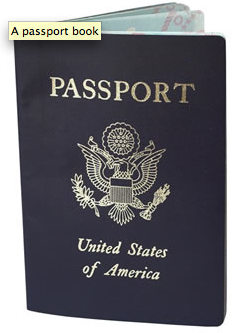
One of the travel-related VIP (Very Important Paper) topics we’ve covered involves passports. For example, we’ve discussed them in:
“May We See Your Papers?”: Passport Cards and Trusted Travelers
“May We See Your Papers?” Redux: Enhanced Driver’s Licenses
We’ve also talked about passports in light of specific topics, like,
A Rose By Any Other Name: Paper Doll Straightens Out Name Change Paperwork, designed to help those who have married, divorced or otherwise had reason to change their names, properly update their passports.
Perhaps you’ve never acquired a passport? You’re not alone. According to the office of Travel and Tourism Industries, only 30% of Americans hold passports compared to 60% of Canadians, 60% of Europeans and 75% of those in the United Kingdom. This percentage is actually up from prior years, as entrance into Canada, Mexico and other countries, which prior to 2009 did not require passports, now does. As I’ve written previously, back when Paper Doll was a girl, going back and forth between Canada and the U.S. was barely more difficult than crossing the threshold of a house; since the Western Hemisphere Travel Initiative, a passport is now required.
I’ve noticed that many of my clients procrastinate when it comes to applying for passports. It’s not that they don’t want to spend the money — although rates have risen recently. They understand that amortized over the course of the ten years one holds a passport, the cost is pretty minimal. And it’s not that they can’t find the essential documentation they’ll need to provide (because, of course, we’ve gotten them so organized that these documents are at their fingertips).
No, the biggest complication seems to be finding time to get everything accomplished, from getting passport photos taken to selecting, photocopying and submitting first-time documentation. During the week, most workers are stuck at work, or at least can’t take the time to get to a passport office. In addition, minors under 16 must now apply in person with both of their parents (barring specific exceptions — see below), requiring not only that individuals carve out time, but that family members find coordinated time to visit passport offices.
Next month, however, provides the perfect opportunity for families to simultaneously catch up with one another and conquer their passport tasks…on a Saturday, when offices are usually closed. That’s because next month, for the third year in a row, there will be:
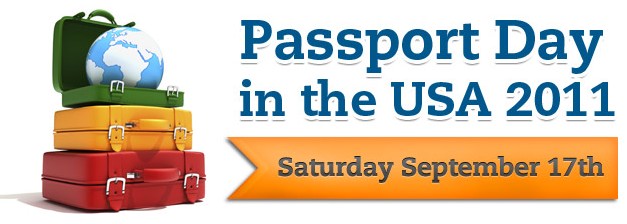
Passport Day in the USA on Saturday, September 17, 2011.
On this date only, passport applicants can visit any of the 24 regional passport agency offices on a Saturday and without an appointment. In addition to the regional passport agency offices being opened on a day they’d normally be closed, many of the 8,000 Passport Acceptance Facilities will be open and/or have expanded hours, and will also not require appointments.
On Passport Day, applicants will be able to apply for either of two passport processing methods:
1) Standard passport processing, which is currently taking approximately 4-6 weeks to complete, requires no extra processing fees in excess of the standard application fees associated with applying for a new passport book for an adult or child, a passport card, or a combination passport book and card for an adult or minor.
2) Expedited processing takes just 2-3 weeks, but there’s an additional $60 processing fee tacked on. (Why do you think Paper Doll is always encouraging you to schedule important tasks well in advance?)
Passport Day in the USA isn’t just an appointment-free day to stand in line for passports that probably should have applied for eons ago. If it were, it would at least be more convenient to accomplish on a Saturday. But, to make things a little more pleasant for adults and kids, the regional passport agencies and many of the passport acceptance facilities (like your local post office) will be sponsoring fun events to coincide with Passport Day. Activities at prior Passport Day events have varied by location, but have included catered snacks, entertainment for children and other diversions. As Saturday, September 17, 2011 gets closer, check back with the official Passport Day site to find events and locations in your area.
Of course, not everyone has to apply in person. If you’re just renewing a passport that was issued within the last 15 years (and when you were at least 16 years of age) and your old one is in fairly decent shape, you can renew by mail. However, if any of the following apply to you:
- You’re applying for a U.S. passport for the first time
- You changed your name since your last passport was submitted, but are unable to legally document the name change
- You’re under age 16
- You previously had a passport but:
- it was lost, stolen or damaged
- it was issued more than 15 years ago
- you were under age 16 when it was issued
then you’ll need to apply for a passport in person. For adults, that means you’ll need to:
1) Fill out a Form DS-11, but don’t sign it until instructed to do so.
2) Submit Form DS-11 in person at a Regional Passport Agency or Passport Acceptance Facility. (If you’re not attending Passport Day, be sure to make to make an appointment if one is required at your preferred location.)
3) Submit evidence of citizenship. (Your documents will be returned to you with your shiny new passport.) Be prepared to present one of the following to prove you really are an American:
–Previously issued, undamaged passport
–Certified birth certificate (i.e., bearing a registrar’s raised, embossed, impressed or multicolored seal, the registrar’s signature, and the date the certificate was filed with the registrar’s office, which must be within 1 year of birth)
—Consular Report of Birth Abroad
–Naturalization certificate
–Certificate of Citizenship
If you can’t provide any primary evidence of U.S. citizenship — let’s say your parents (Christopher Walken and Sissy Spacek) decided to move underground during the Cuban Missile Crisis before you were born and your birth wasn’t exactly documented — you can submit secondary evidence of your citizenship.

(Just make sure to apply more than six weeks before you and your bride, Alicia Silverstone, plan to leave on your honeymoon.)
4) Present identification (e.g., any one of the following to prove you are who you claim to be):
–Previously issued undamaged passport
–Naturalization certificate
–Valid driver’s license*
–Current (city, state or federal) Government ID
–Current U.S. military ID
*If you submit your application and evidence at a Passport Acceptance Facility like a post office (instead of at a regional passport agency) and your proof of identification is an out-of-state driver’s license, you’ll need to provide a second form of identification bearing your photo, full name, date of birth and the document’s date of issuance.
5) Submit a photocopy of whatever identification you presented in step #4. (Just to be clear, you’ll give the representative your actual proof of citizenship, which will be returned later; however, you’ll just show your actual proof of identification and then provide a photocopy, which will not be returned.)
6) Pay the fee(s) associated with your application.
7) Provide two identical passport photos, in accordance with photo requirements, but do not attach them to the DS-11.
Speaking of which, peek at some early 20th century passport photos to see why you might want to avail yourself of some good advice regarding how to look great in yours. After all, you don’t want to end up looking like the Unsinkable Molly Brown (a sturdy traveler, but one with less than stellar luck at traveling).
For those under 16, steps #1-3 are identical to those above. However, as noted previously, the minor and both parents (or guardians) must appear when submitting documentation. In addition, you must:
Submit evidence of the relationship between parents/guardians and the minor, which can be:
–Minor’s certified U.S. birth certificate with both parents’ names*
–Minor’s certified Foreign Birth Certificate with both parents’ names*
–Minor’s Report of Birth Abroad with both parents’ names*
–Adoption Decree listing adoptive parents’ names
–Court order establishing custody or guardianship of the minor
*As of April 1, 2011, there’s a new requirement for first-time applicants. The full names of both parents of an applicant must be listed on the certified U.S. birth certificate. For most people, this is not a problem, but in the cases of single mothers who did not list fathers on their children’s birth certificates or adoptees whose birth parents wished to remain anonymous, there are a few more hoops through which parents must jump.
A State Department representative notes that in such situations a passport applicant may submit a certified copy of a birth certificate listing the complete name of the registering parent and that two adoptive parents can amend their child’s birth certificate to reflect both of their complete names. In the latter situation, a certified copy of a child’s original birth certificate will be accepted as long as it’s submitted with a certified copy of the adoption decree indicating the name of the child and the adoptive parents.
Present identification of the parents/guardians, as if they were the ones applying for a passport.
Submit a photocopy of the identification of the parents/guardians.
Provide parental consent. Although both parents must, in general, be present to provide consent, the State Department has outlined possible scenarios in which only one parent may be present while providing the other parent’s signed, notarized Statement of Consent (Form DS 3053).
Whether you take advantage of Passport Day in the USA 2011, apply by appointment during the week, renew your passport by mail or already have your flying-south-for-the-
winter ducks in a row, may you travel often, safely and well. Bon voyage!


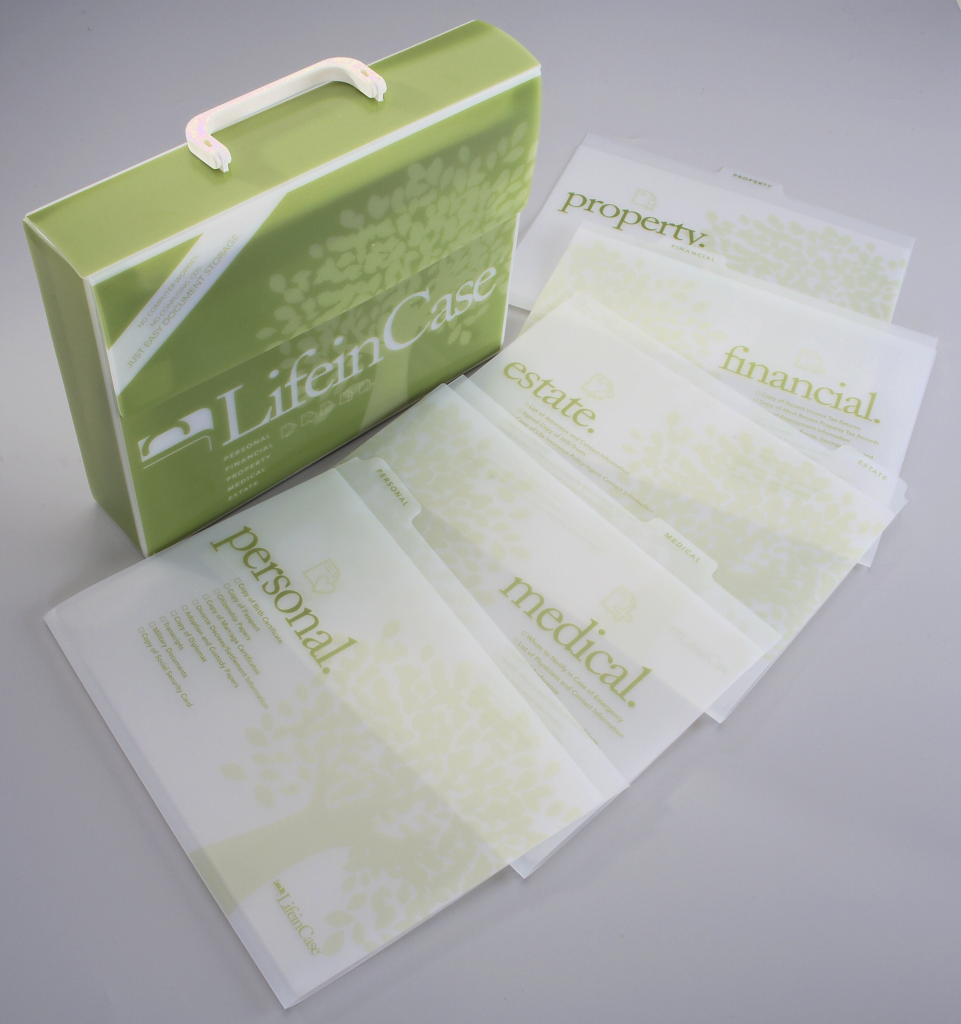
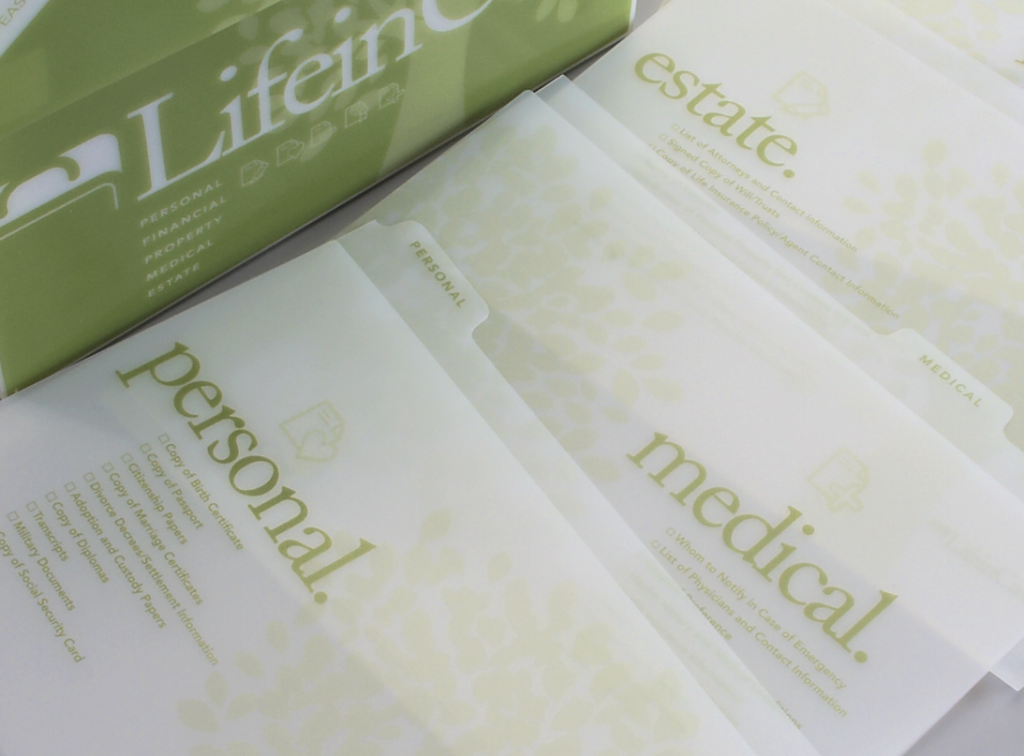
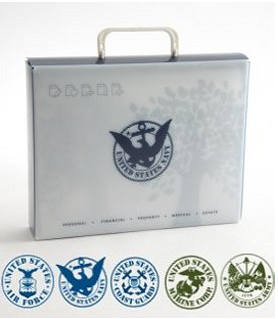



Follow Me